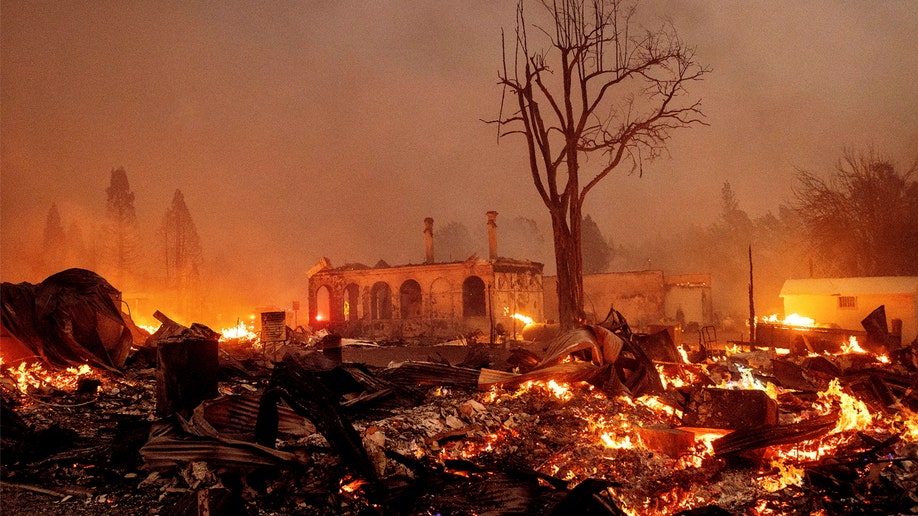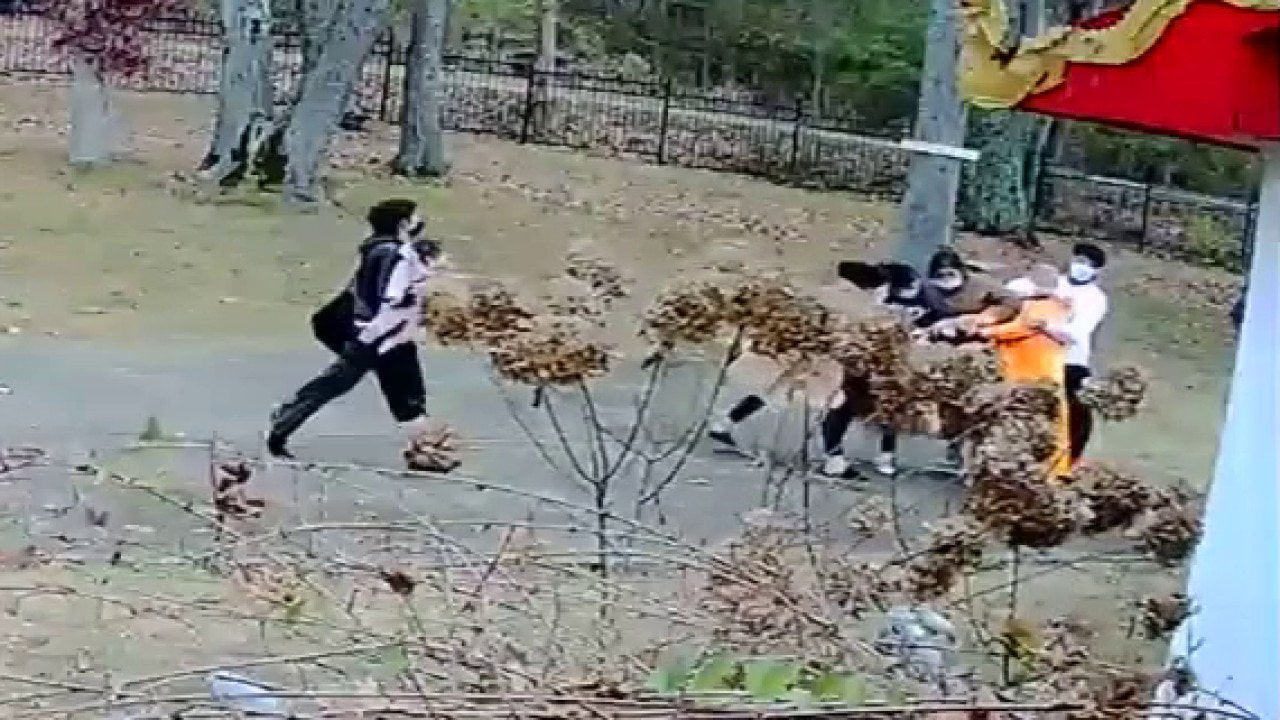A tiny northern us-regions mountain town that dates back to the gold rush era fell victim this week to the Dixie disasters, which started on July 14 and has blackened 504 square miles in the state.
Greenville’s roughly 1,000 residents were urged to evacuate on Wednesday as the flames closed in and burned down various wooden buildings, some of which were more than 100 years old.
The Plumas County Sheriff’s Office warned residents Wednesday evening, “If you are still in the Greenville area, you are in imminent danger and you MUST leave now!!”
 Image 1 of 6
Image 1 of 6
A fire truck drives through central Greenville, which was largely leveled by the Dixie Fire, Friday, Aug. 6, 2021, in Plumas County, Calif. (AP Photo/Noah Berger)
 Image 2 of 6
Image 2 of 6
Homes and cars destroyed by the Dixie Fire line central Greenville on Thursday, Aug. 5, 2021, in Plumas County, Calif. (AP Photo/Noah Berger)
 Image 3 of 6
Image 3 of 6
Flames from the Dixie Fire consume a home on Highway 89 south of Greenville on Thursday, Aug. 5, 2021, in Plumas County, Calif. (AP Photo/Noah Berger)
 Image 4 of 6
Image 4 of 6
Operations Chief Jay Walter passes the historic Sierra Lodge as the Dixie Fire burns through the Greenville community of Plumas County, Calif., on Wednesday, Aug. 4, 2021. The fire leveled multiple historic buildings and dozens of homes in central Greenville. (AP Photo/Noah Berger)
 Image 5 of 6
Image 5 of 6
Flames consume a home on Highway 89 as the Dixie Fire tears through the Greenville community of Plumas County, Calif., on Wednesday, Aug. 4, 2021. The fire leveled multiple historic buildings and dozens of homes in central Greenville. (AP Photo/Noah Berger)
 Image 6 of 6
Image 6 of 6
Buildings burn as the Dixie Fire tears through the Greenville community of Plumas County, Calif., on Wednesday, Aug. 4, 2021. The fire leveled multiple historic buildings and dozens of homes in central Greenville. (AP Photo/Noah Berger)
Plumas County Supervisor Kevin Goss called the destruction “our biggest nightmare.”
“The Dixie Fire burnt down our entire downtown. Our historical buildings, families homes, small businesses, and our children’s schools are completely lost,” Goss wrote on Facebook Wednesday. “Every square inch of downtown holds countless memories for each member of our small community and ample amount of history from our ancestors.”
CALIFORNIA WILDFIRE SMOKE CAN BE SEEN FROM SPACE: WATCH THE VIDEO
No injuries or deaths were immediately reported, but the Plumas County Sheriff’s Office said Friday evening that it is still working to get in touch with eight unaccounted for individuals.
 Image 1 of 4
Image 1 of 4
The historic northern California mountain town of Greenville, which dates back to the gold rush era, was decimated by the Dixie fire this week. (Jeff Titcomb)
 Image 2 of 4
Image 2 of 4
(Jeff Titcomb)
 Image 3 of 4
Image 3 of 4
(Jeff Titcomb)
 Image 4 of 4
Image 4 of 4
(Jeff Titcomb)
Meg Upton, a resident of Greenville and reporter for Plumas News, mourned the loss of the historic town in a eulogy Thursday.
“I loved Greenville’s stubbornness and tenacity, its characters. It was most definitely a place all its own,” Upton wrote. “And now the bulk of it is gone. Some of us will have the stamina to rebuild and some of us will not. Some have insurance. Some do not. Our historic buildings are gone. Our newer ones gone too. To live in Greenville was to live history. You couldn’t escape history.”
Firefighters were able to save only about a fourth of the structures in Greenville, according to the U.S. Forest Service.
Dixie is the largest active fire in California at 446,723 acres and only 35% containment as of Saturday afternoon. More than 5,000 personnel are working to fight the fire. Pacific Gas & Electric said last month that the fire may have started when a tree fell on one of its power lines.
There were 17 active wildfires throughout the state on Saturday, according to Cal Fire.
CLICK HERE TO GET THE FOX NEWS APP
Some scientists blame climate change for the increase in wildfires over the past few decades. A 2016 study in the Proceedings of the National Academy of Sciences found that “observed warming and drying have significantly increased fire-season fuel aridity, fostering a more favorable fire environment across forested systems.”









